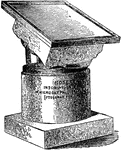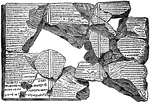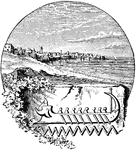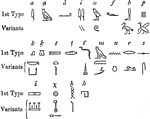Clipart tagged: ‘hieroglyphic’

Anubus
"An Egyptian deity, styled Anepu on hieroglyphic monuments, was, according to mythology, the son of…

Judgment of the Dead
An illustration of an Egyptian hieroglyphic depicting the judgment of the dead. "An ape-assessor scourages…
Obelisk
An obelisk is a tall, thin, four-sided, monument with a pyramid top. This particular one is inscribed…

Rosetta Stone
"Rosetta Stone is the name given to a stone found near the Rosetta mouth of the Nile by a French engineer…

Siege of a City with Battering Ram
An illustration of a hieroglyphic depicting the siege of a city showing the use of a battering ram.

Assyrian Table with Deluge Legend
An illustration of an Assyrian tablet depicting part of the Deluge legend. A deluge myth or flood myth…

